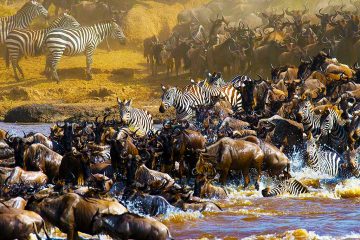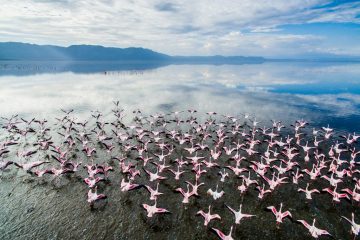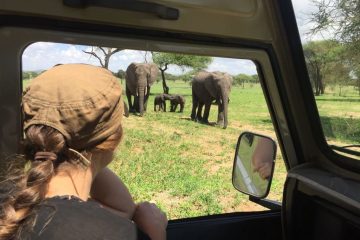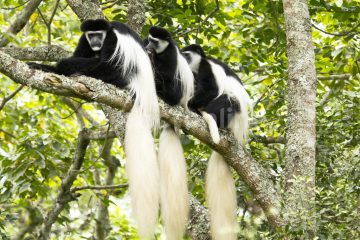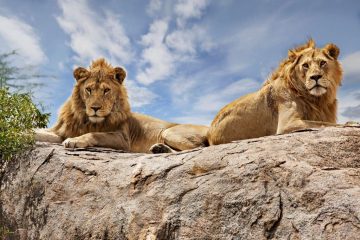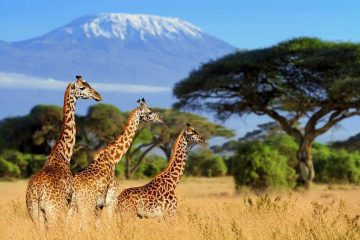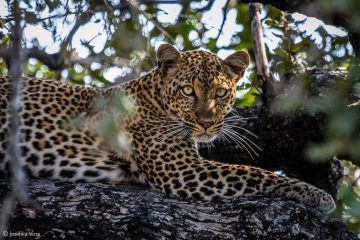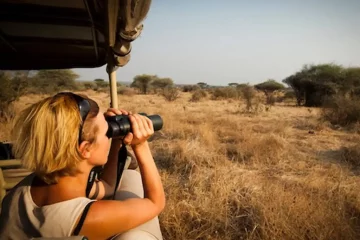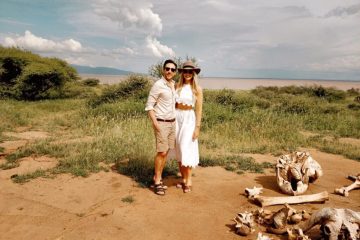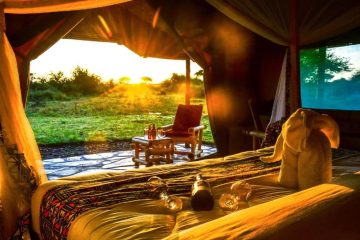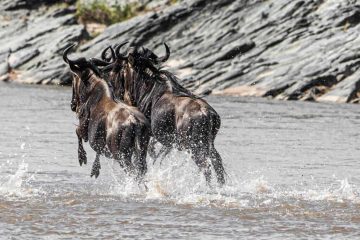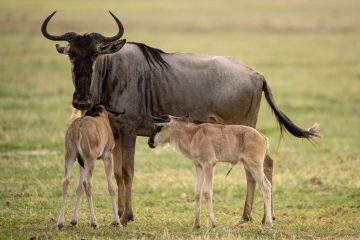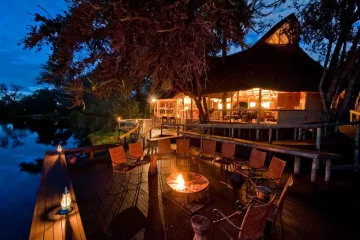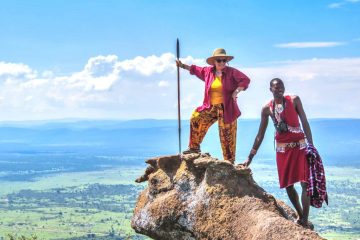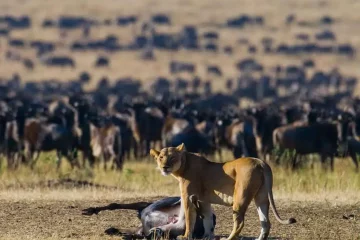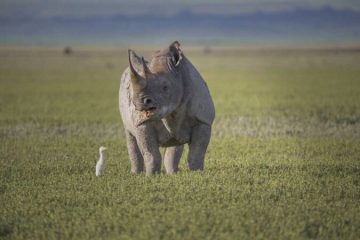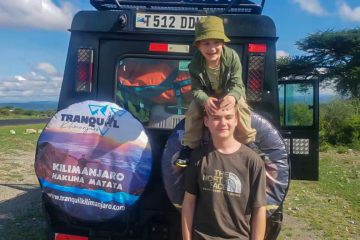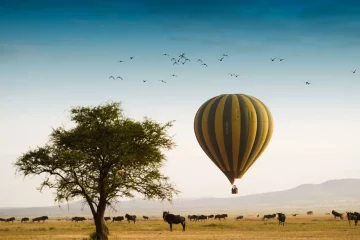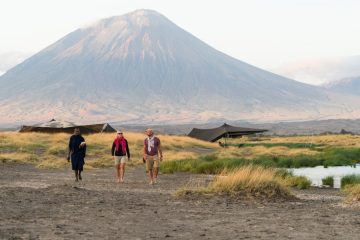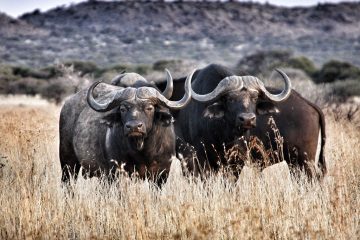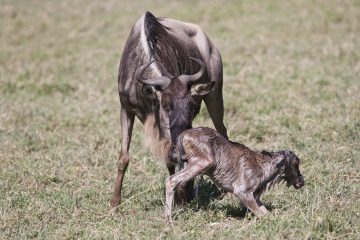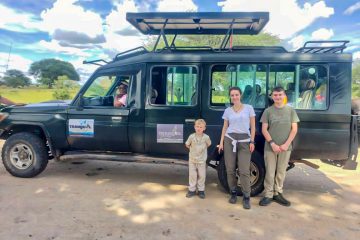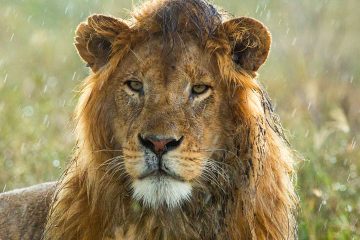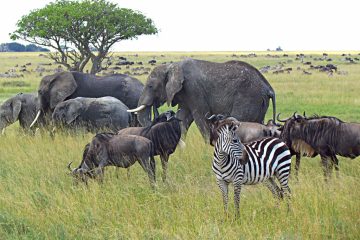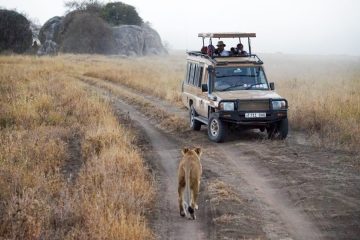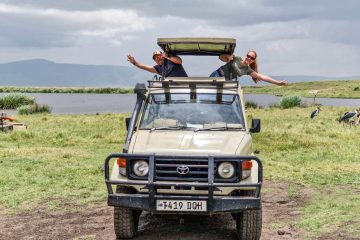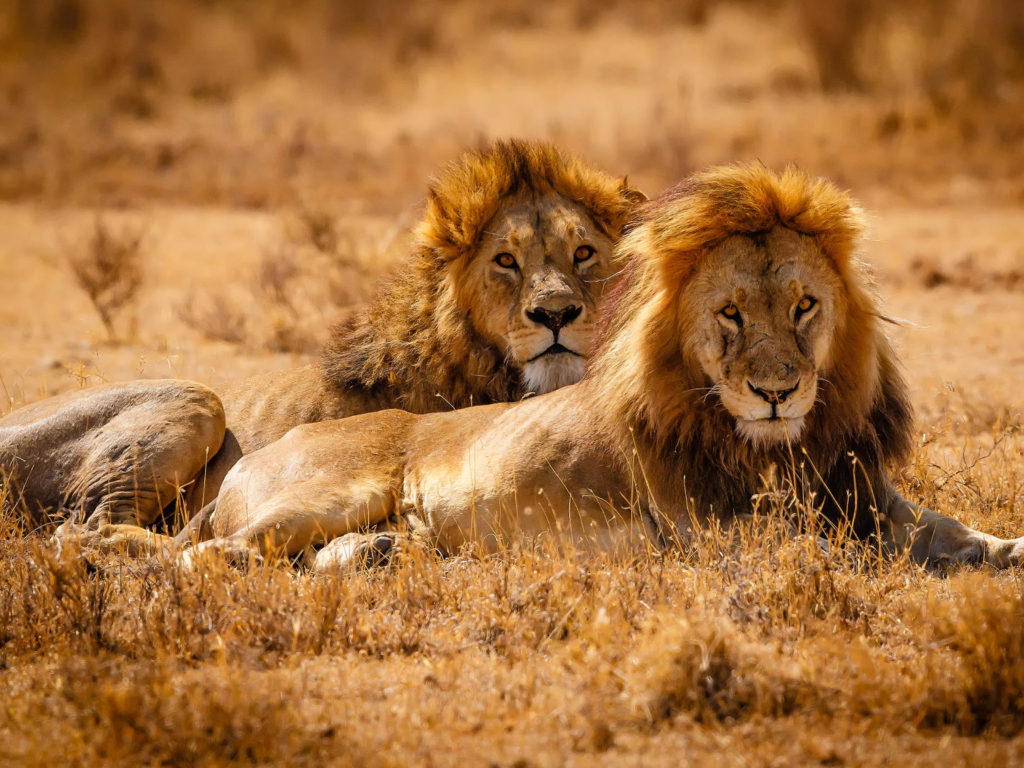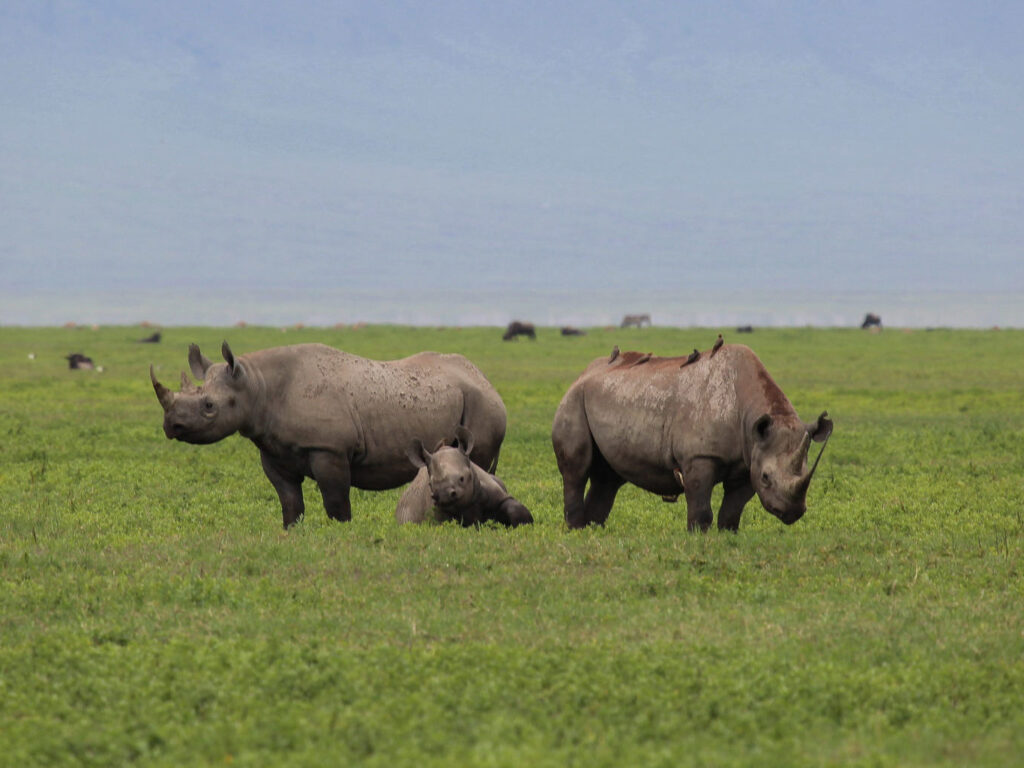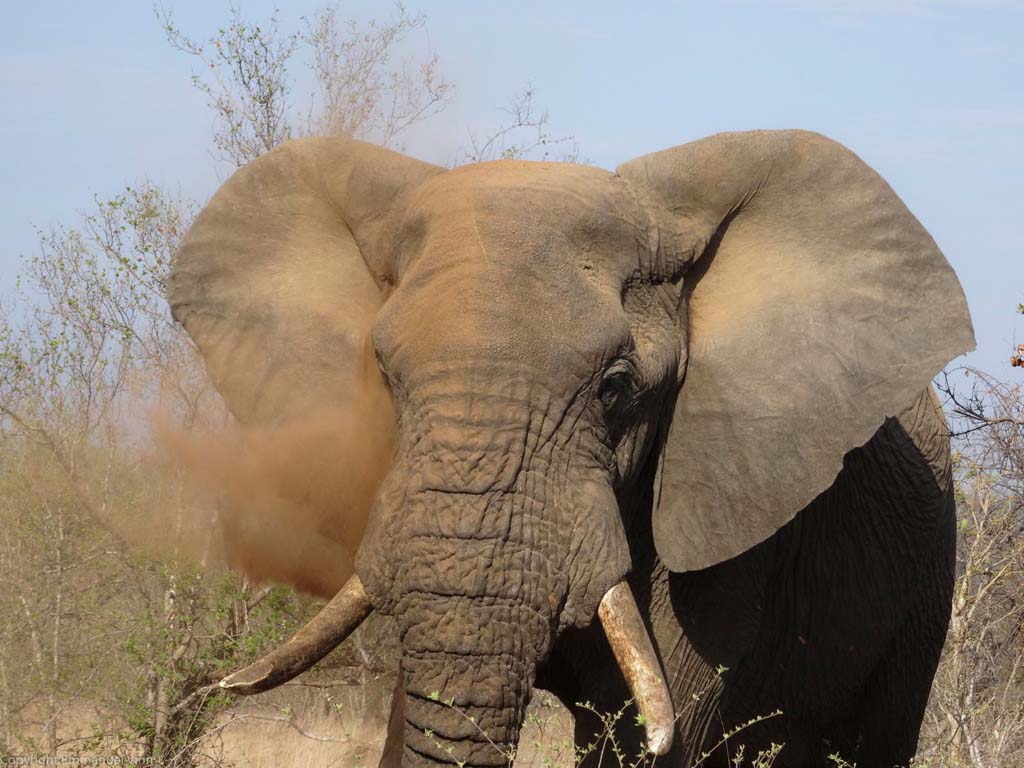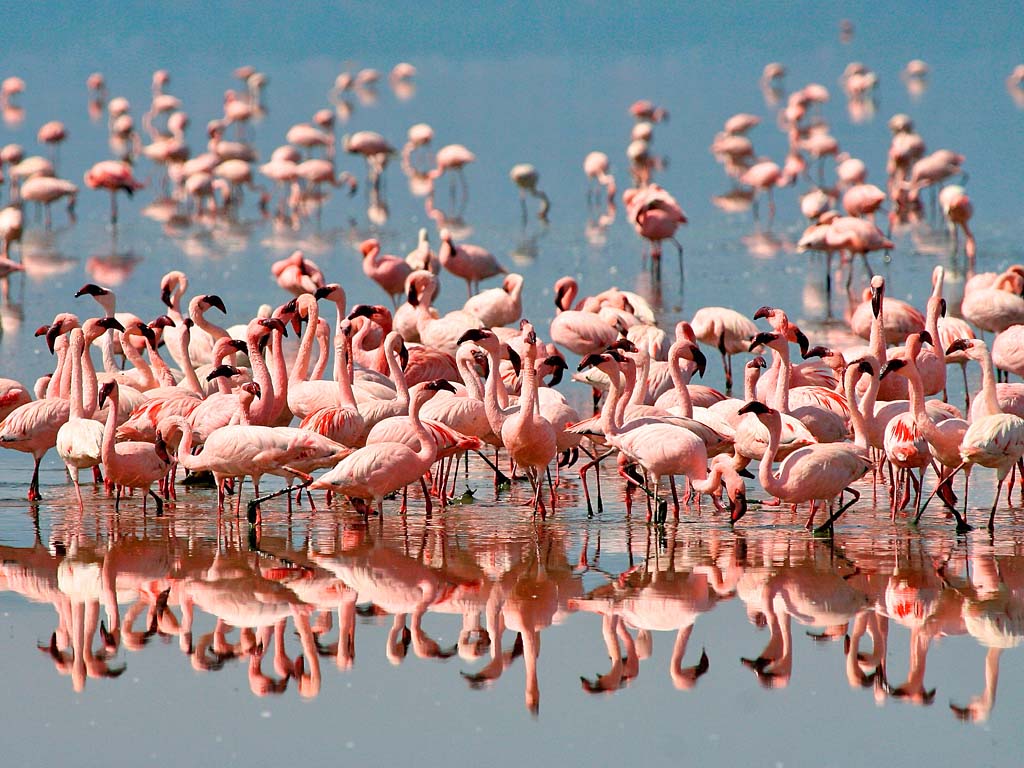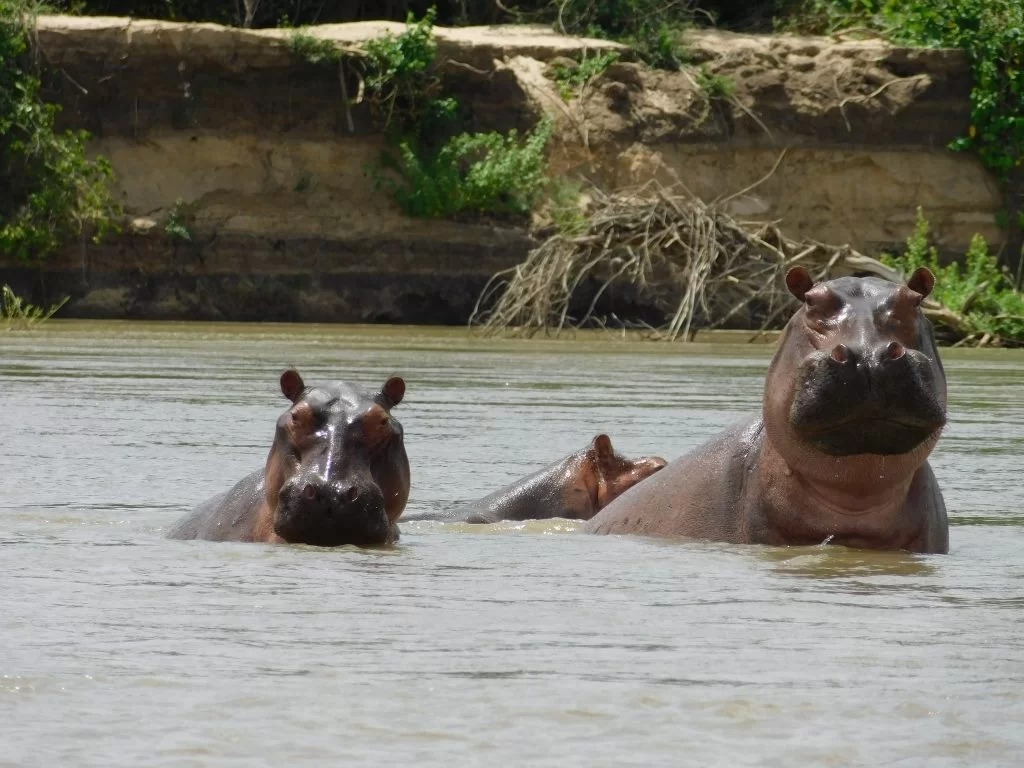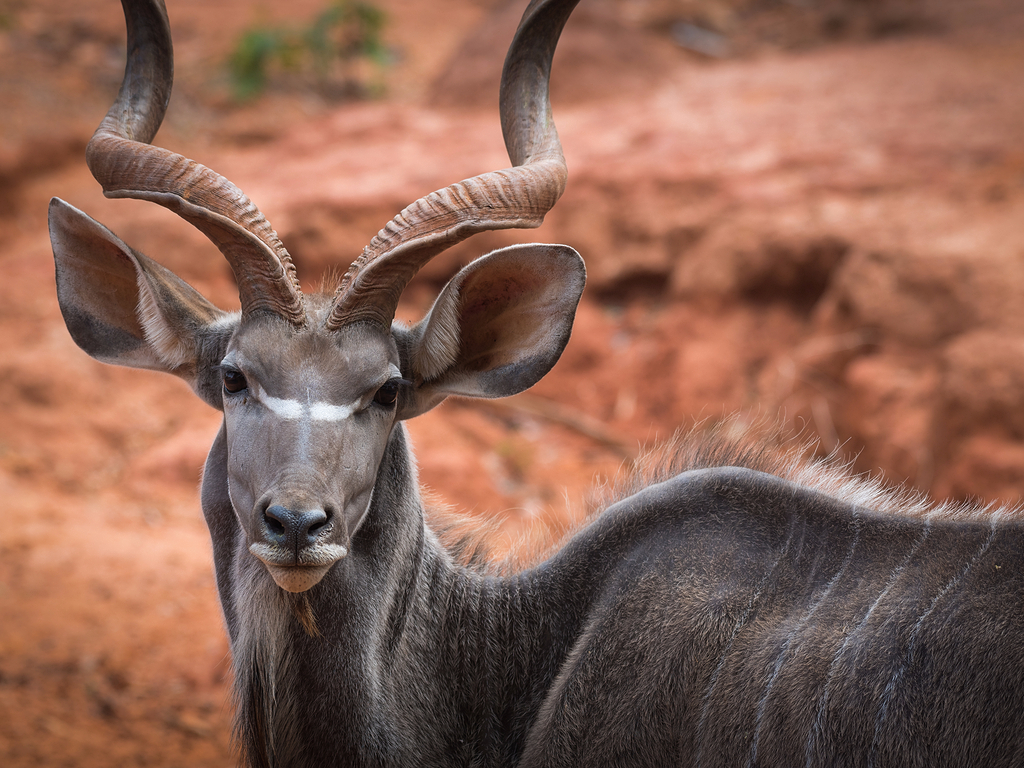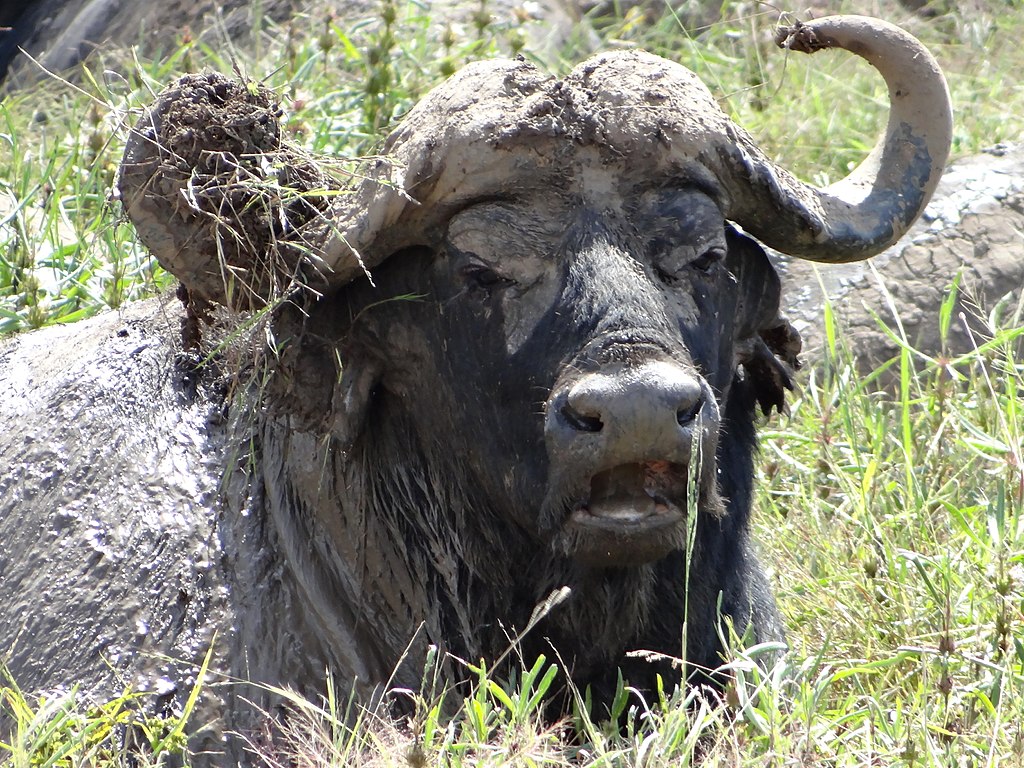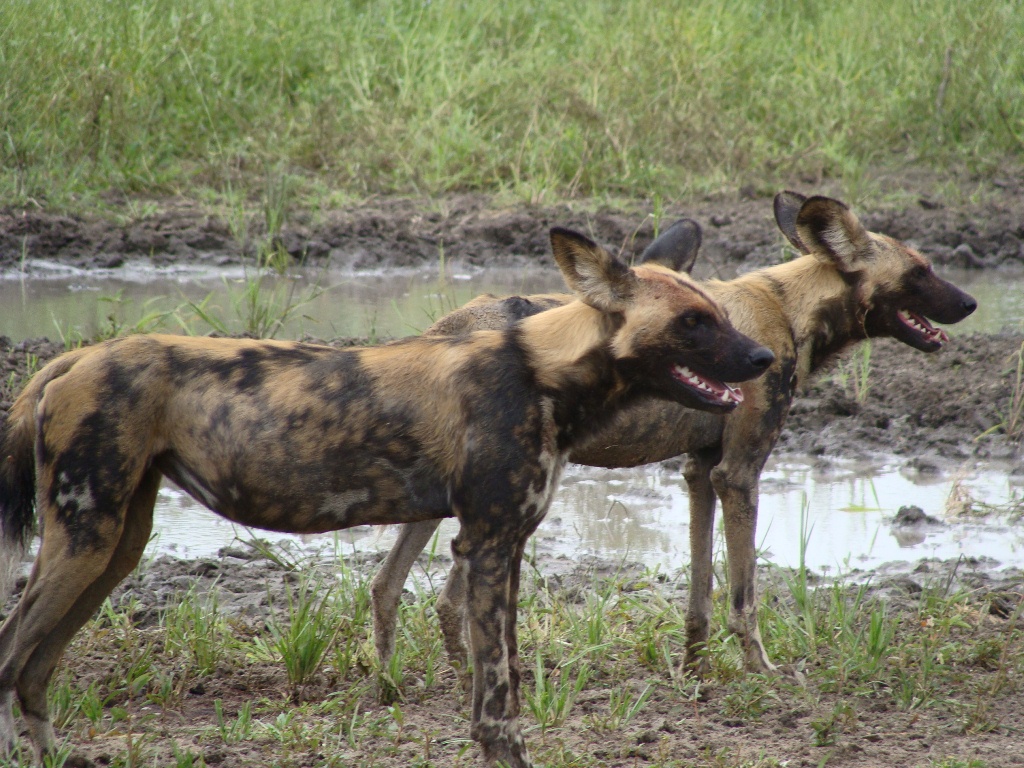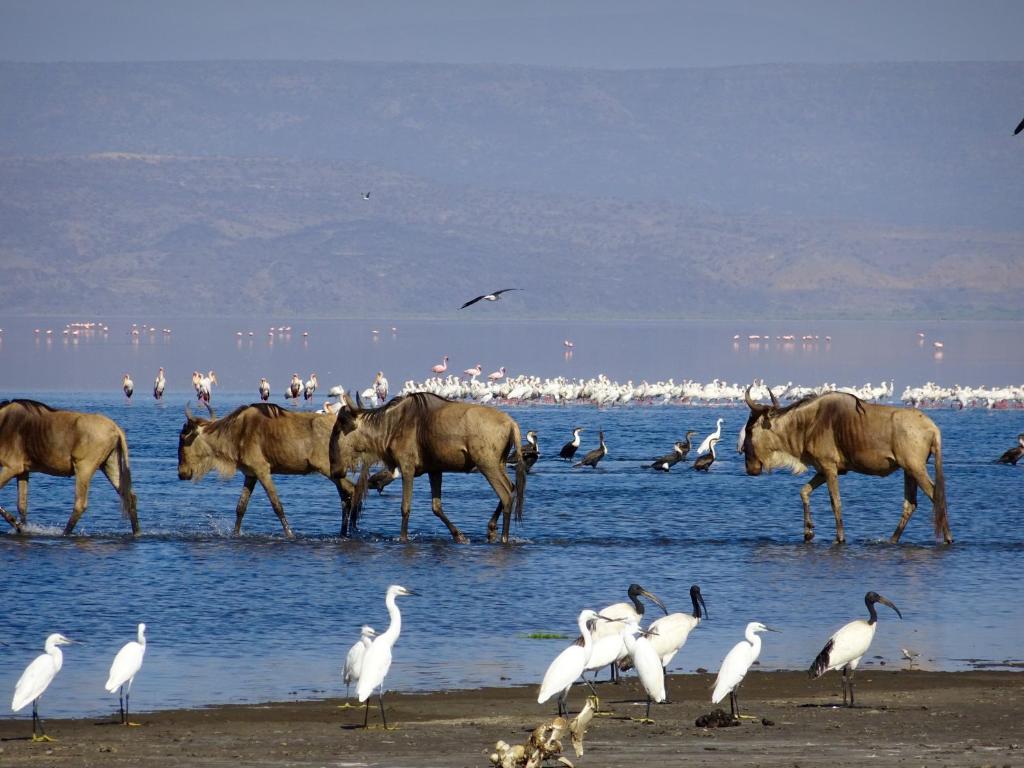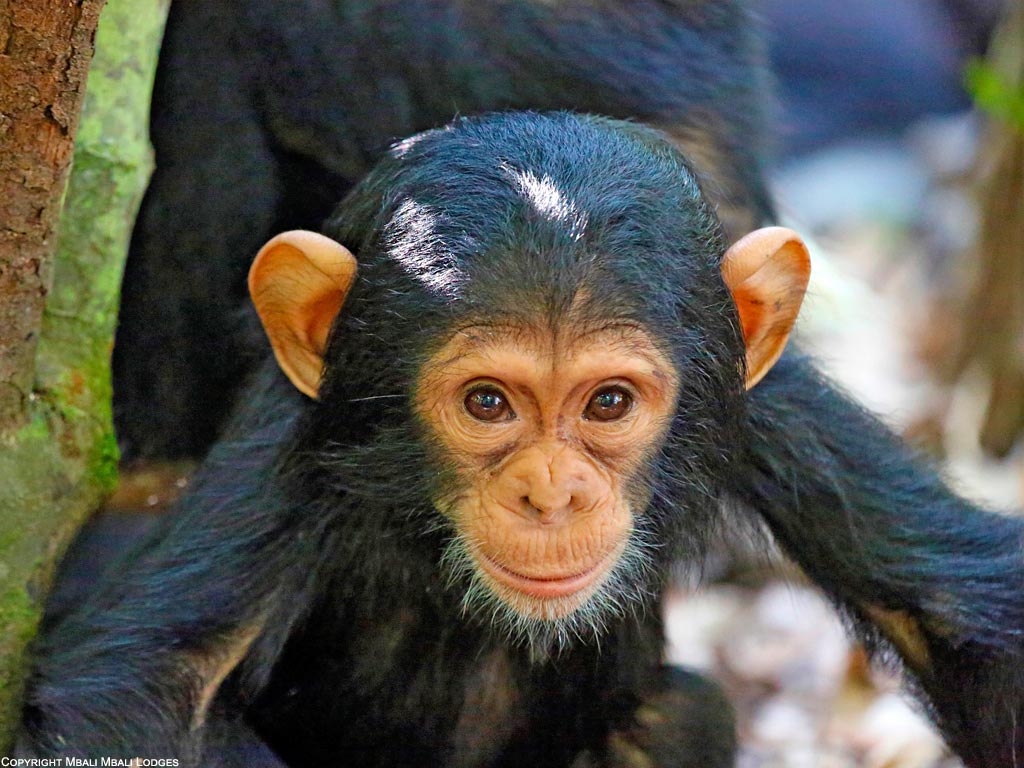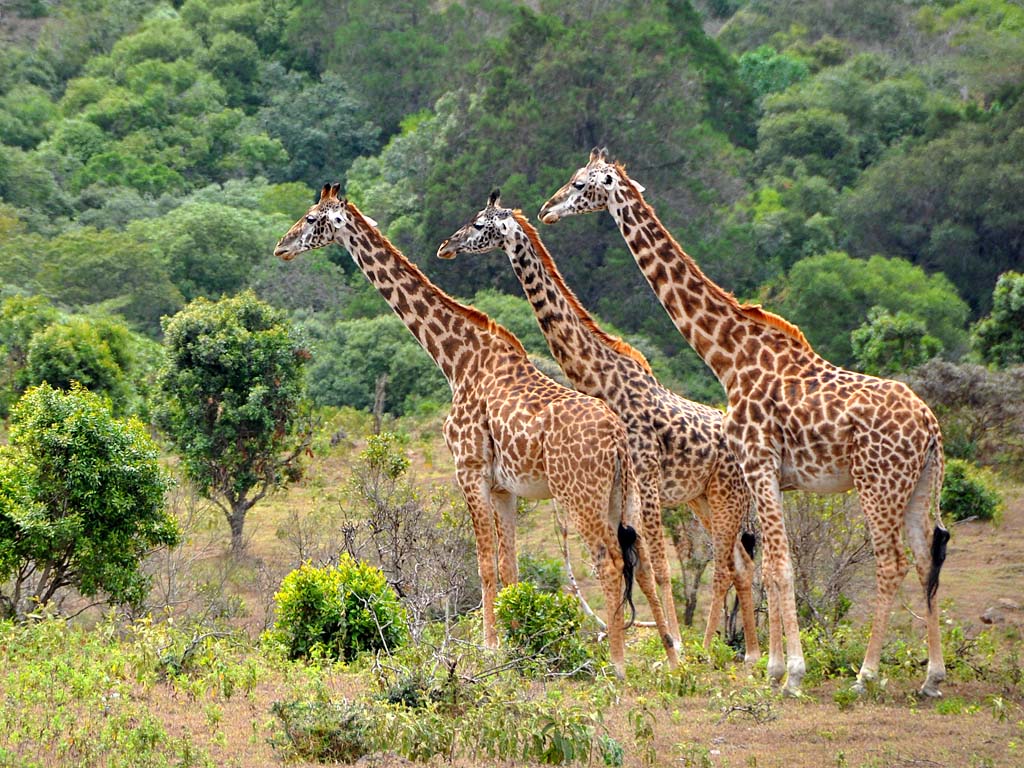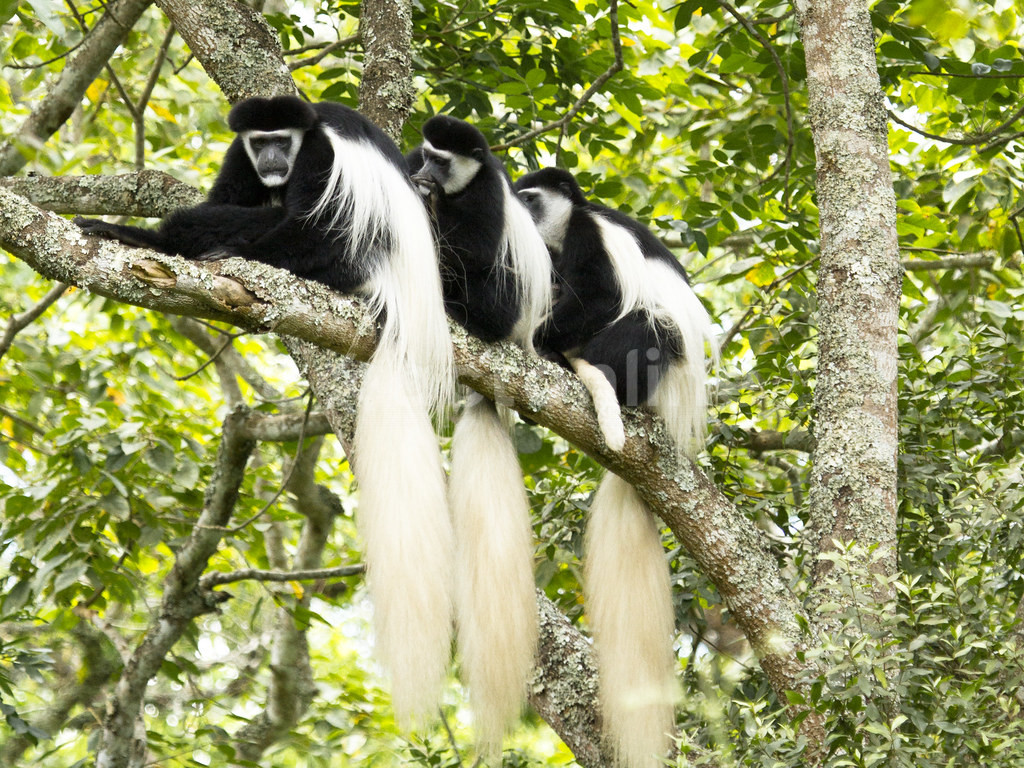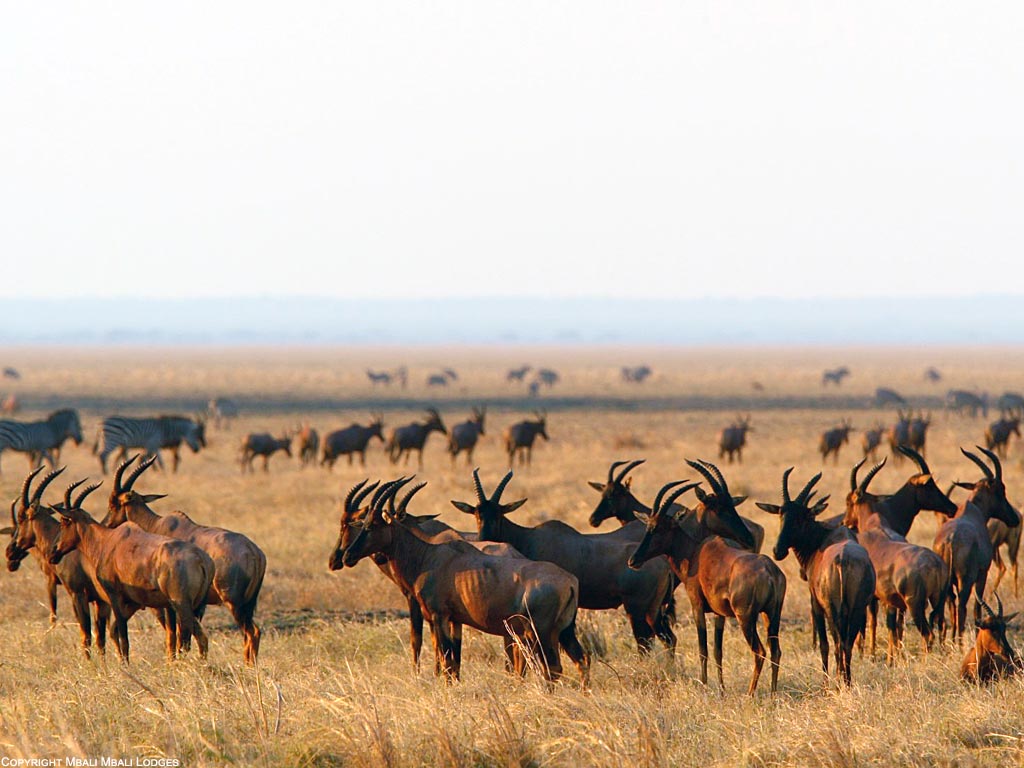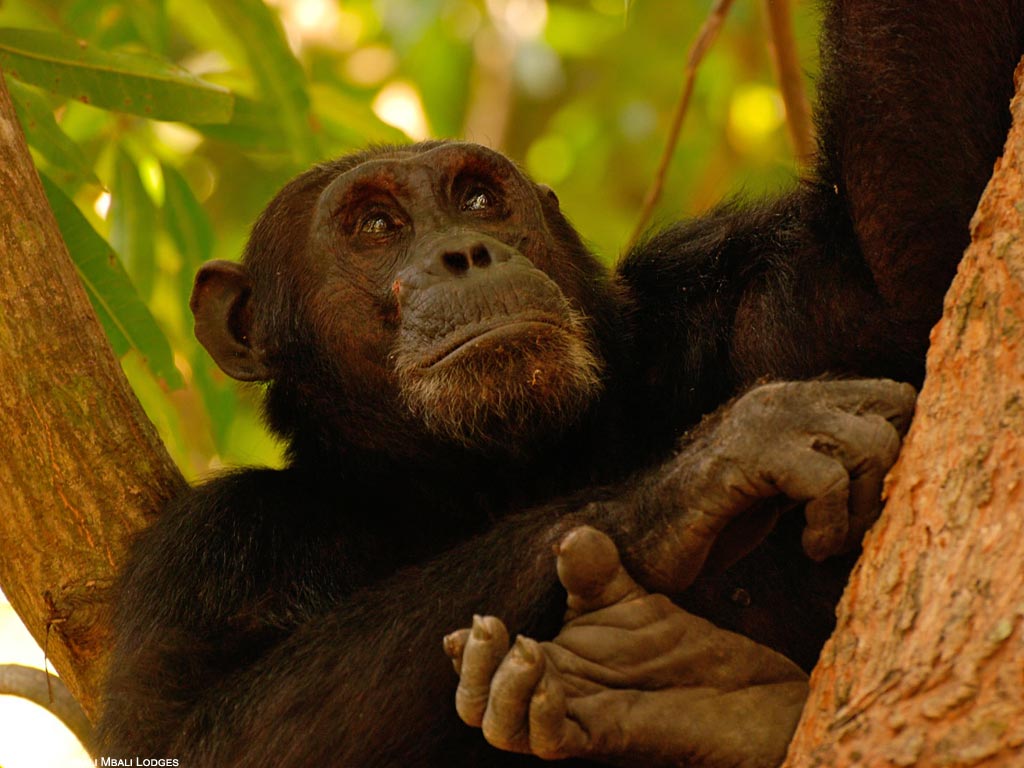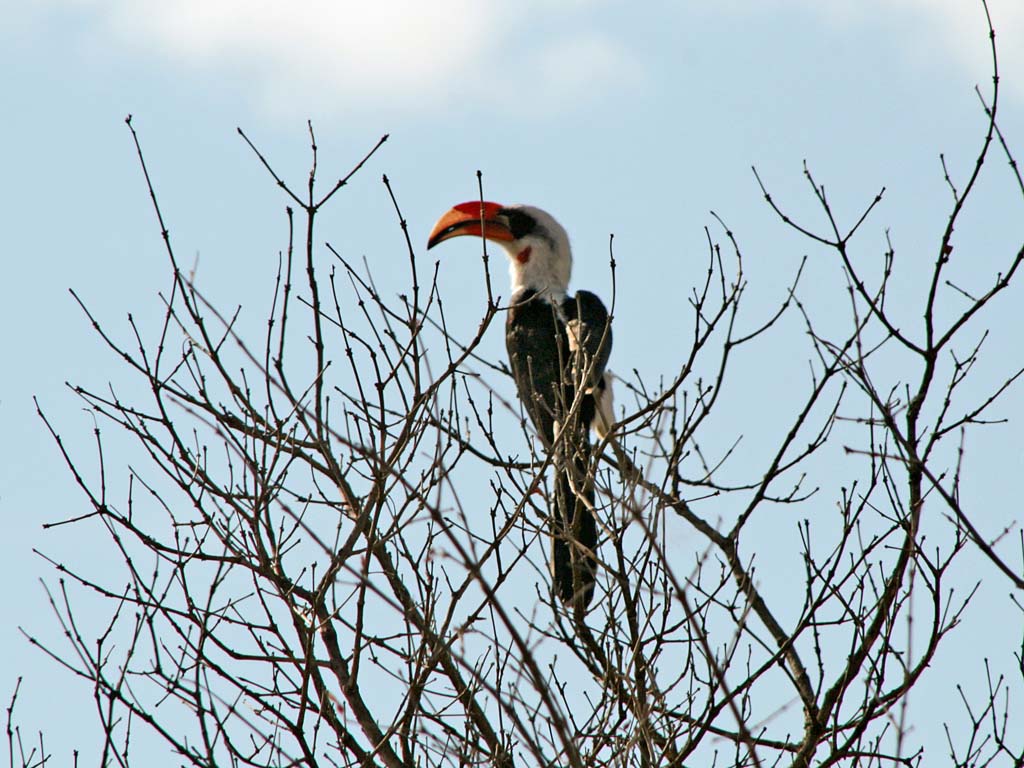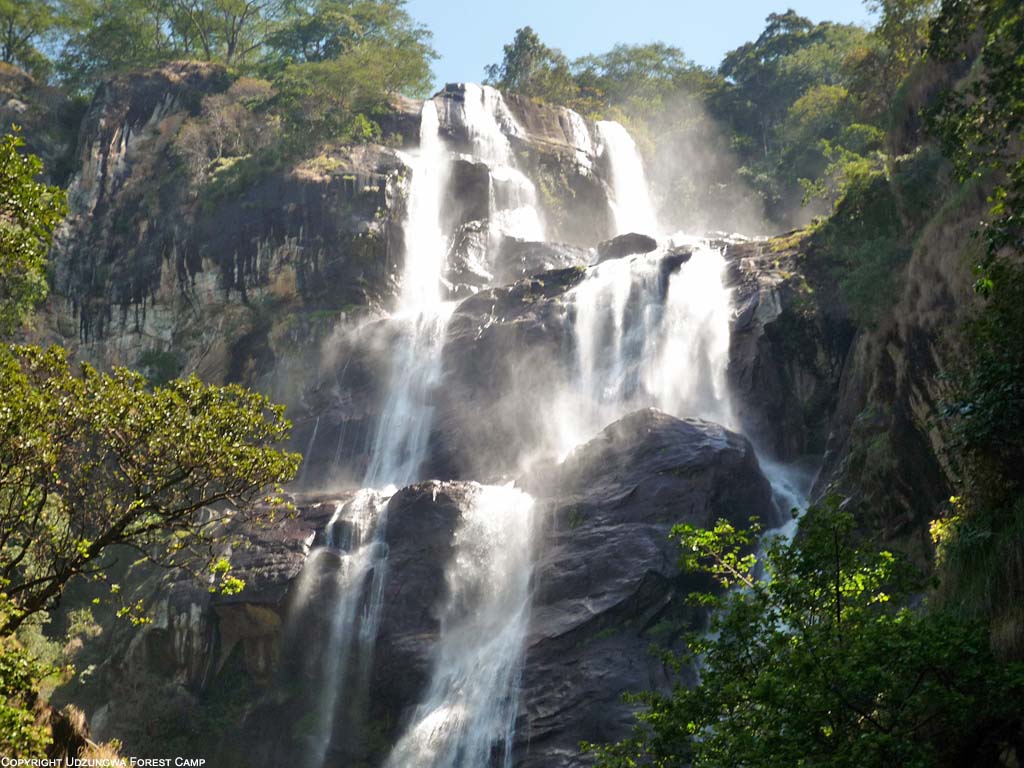Arusha National Park is one of Tanzania’s most accessible parks, located just a short drive between Arusha and Moshi. It’s a superb day trip location and a great start or conclusion to any Tanzanian itinerary.
Arusha National Park contains a diverse range of landforms, from extensive grassland and rainforest to acacia forests and alpine flora on Mount Meru’s upper peaks.
Arusha National Park, at slightly over 200 square miles, has a high density of species and is home to the world’s biggest giraffe population.
Arusha National Park contains among of Tanzania’s highest animal concentrations.
On a game drive, you may see Cape buffalo, elephants, hippos, and zebra in plenty, as well as the occasional lion and leopard.
Game drives, kayaking, trekking Mount Meru, and walking safaris are all popular activities in Arusha National Park.
It’s one of Tanzania’s few national parks where you may go on a walking safari.
Walking safaris are a great alternative to the traditional safari experience, and national park authorities have recently allowed walking safaris in other parks on the northern safari circuit, including Tarangire National Park, Lake Manyara, and some fringe concessions on the Serengeti National Park’s edge.
Safari in Arusha National Park
Because of its proximity to Arusha and Moshi, as well as its modest size, Arusha National Park can usually be toured in a single day and is a terrific stand-alone trip.
It also goes well with lengthier safari itineraries in the north, such as the Ngorongoro Conservation Area and Serengeti National Park.
Arusha National Park, which is located at the foot of Mount Meru, is also suitable for a quick safari after hiking the high slopes of the mountain.
Visitors typically neglect this park because they are concerned that they will not see enough animals. Arusha National Park, on the other hand, has a lot to offer, and it dazzles with a wonderful blend of flora and animals as well as diverse landscapes.
During a wildlife drive in the “little Serengeti,” you’re likely to see tranquil herds of buffaloes, timid bushbucks on the outskirts of the woodland, as well as warthogs and zebras. As you approach the Ngurdoto Crater, you’ll soon find yourself in a beautiful rainforest, where you may see the sporty black and white colobus monkey and the graceful mitis monkey. The Ngurdoto Crater is a smaller variant of the Ngorongoro Crater, with a diameter of around 3 kilometers. You could even see buffaloes in the wetlands on the crater bottom if you’re lucky.


